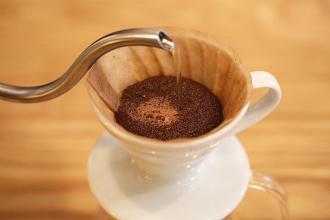How do roasted coffee beans preserve the characteristics of Italian roasted coffee beans
How do roasted coffee beans preserve the characteristics of Italian roasted coffee beans
The primary goal of roasting is to heat the coffee to the desired ripeness, and then make further roasting adjustments according to the expected brewing method of the particular coffee or beans themselves. Shallow roasting can better show the natural flavor of coffee (good or bad), which is better matched with the relatively traditional brewing method. The partial depth of roasting replaces most of the original flavor of coffee with the coking roasting flavor that we are very familiar with, so the coffee beans of lower quality are almost treated by deep roasting. Deep roasting is suitable for making espresso at home (or coffee shop), and the basic characteristics of coffee brewing determine that the lighter the roast, the more sour the coffee.
The period of drinking after the completion of the cultivation of beans (about 24-48 hours) until obvious defective flavor appears is called the best flavor period. Take moderately baked beans as an example, the best flavor period is about 30 days. If it is light baking, it is about 40-50 days, while the best flavor period of deep baking is short, usually within 30 days.
Secret 1: to achieve the highest caramelization-caramelization is an important factor affecting the flavor of coffee, as raw beans absorb a lot of heat when roasting, then there is the first 1st cracking, at this time, the sugar begins to be converted into carbon dioxide, water continues to evaporate, the aroma of coffee will gradually come out and form coffee oil. This pyrolysis reaction can last until the second explosion (2nd cracking), but when the second explosion is completed, the temperature of the bean should be lowered immediately and as soon as possible, so that the highest caramelization can be obtained.
Tip 2: minimum carbonization-some ingredients will also be carbonized during the baking process, forming a bad bitter substance, so when you finish the second explosion, stop heating and minimize carbonization at the same time.
Tip 3: pay attention to the change in sound-coffee beans make two bursts during baking, and the first burst is low, indicating that the starch begins to turn into caramel and the water evaporates with carbon dioxide. The second burst sound is more violent and sharp, this is the sound of coffee bean cell fiber fracture, at this time should immediately stop heating, and as soon as possible with cold air to lower the temperature of the bean. The time of the first explosion and the second explosion can be very different, so baking different beans, it is necessary to find out the most suitable baking conditions for this bean.

Important Notice :
前街咖啡 FrontStreet Coffee has moved to new addredd:
FrontStreet Coffee Address: 315,Donghua East Road,GuangZhou
Tel:020 38364473
- Prev

Usage of coffee cloth powder-method of brewing coffee with coffee powder
Coffee cloth powder machine usage-using coffee powder to brew coffee ①, light pressure even with the weight of the cake hammer itself; ②, heavy pressure even with man-made external force. Due to too much artificial force, packing is one of the biggest factors in the whole process of ESPRESSO extraction, so experienced baristas choose ① to ensure the consistency of the product.
- Next

Diagram of the proportion of gouache in hand-brewed coffee
Hand-brewed coffee gouache ratio step diagram practical parameters of hand-brewed coffee proportion [heavy taste] 1 coffee bean grams than black coffee milliliters), that is, gold cup criteria of 1 12.5 grams 1bureau 13.5 (beans weigh more milliliters than raw water) [moderate taste] 1 12 cup 1pur13 (I. E. gold cup criteria 1V 14.5 grams 1lane 15.5) [refreshing] 1:14 ~ 1:16 (that is, 1RV 16.5 of the Golden Cup Criterion)
Related
- Beginners will see the "Coffee pull flower" guide!
- What is the difference between ice blog purified milk and ordinary milk coffee?
- Why is the Philippines the largest producer of crops in Liberia?
- For coffee extraction, should the fine powder be retained?
- How does extracted espresso fill pressed powder? How much strength does it take to press the powder?
- How to make jasmine cold extract coffee? Is the jasmine + latte good?
- Will this little toy really make the coffee taste better? How does Lily Drip affect coffee extraction?
- Will the action of slapping the filter cup also affect coffee extraction?
- What's the difference between powder-to-water ratio and powder-to-liquid ratio?
- What is the Ethiopian local species? What does it have to do with Heirloom native species?

